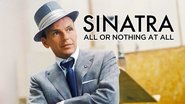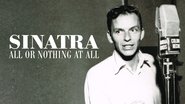fearthebowlink
This documentary was absolutely fabulous. Sinatra has always been my favorite, as his music is what I was raised on. I can openly admit though, that I only knew bits and pieces about his life before watching the documentary. I feel so informed after having watched hours about the man's life, and I greatly appreciate that the documentary included high points as well as low points. To know a person, you have to know all aspects of his/her personality, and I think that this documentary did a wonderful job of trying to cover so much material in only a few hours.I would definitely recommend watching this documentary if you want to learn a little bit more about Ol' Blue Eyes and the fantastic work that he accomplished in his lifetime!
Robert J. Maxwell
Sinatra was born in Hoboken, New Jersey, at a time when Hoboken was the punch line of a joke, full of working men's saloons with sawdust floors, ethnically diverse -- blacks, Italians, Irish, and Jews. (Now it's a gentrified Yuppie paradise.) He worked his way up to lead singer with some big bands of the period -- Tommy Dorsey and Harry James -- before striking out on his own. He was picked up by MGM and made a few musicals for them. During the war years, he was a phenomenon of vernacular culture. We haven't seen anything like it recently, not since the Beatles and, before them, Elvis Presley. The skinny Sinatra and his bow ties were parodied in cartoons of the time, but it drove the adolescent girls wild.After the war his career slumped, as careers will, and he took to boozing it up. His movies were flops. Until "From Here to Eternity" which brought him back to the top, chairman of the board, and he turned into the epitome of swinghood. Pals with Sammy Davis, Jr., Peter Lawford, Dean Martin, and others, his lingo entered the lexicon: "Ain't that a kick in the head?", "What a gas!", "Ring-a-ding-ding." And he more or less stayed there for the rest of his life.The documentary is pretty comprehensive. We hear from his friends, his arrangers, and his ex wives. On the audio clips, his voice sounds more Hoboken than it does in his movies or public appearances. He speaks at a quicker pace and curses freely. There are extensive clips from a TV interview with Walter Cronkite. Taken together, they present an image of a down-to-earth singer with a humanitarian streak. He was anti-racist and anti-anti-Semitic. He did more than accept Jews. He ADMIRED them a great deal.At 240 minutes, one is tempted to say there is nothing left to learn about the man. Except that there is. He was everything the film tells us he was, but he was also a man of immense ego. The film tells us that, yes, he palled around with Sam Giancanna but it doesn't tell us who Sam Giancanna was besides a good golfing buddy. The guy was a big-time mobster and murderer at a time when the Mafia had clout enough to sort of lean an election in John F. Kennedy's favor.The word "bodyguard" appears nowhere, yet after becoming a powerful figure Sinatra was ordinarily accompanied by a couple of men the size of small mountains,. There are numerous anecdotes of people who fell afoul of Sinatra for virtually no reason. In his book, "Games People Play," Eric Berne describes an incident in which he found himself at some kind of girly show next to Sinatra's table. He leaned over and jokingly remarked, "I see you're as much a lecher as I am." Moments later, one of the mountain men approached Berne and asked if he would like to have to face rearranged. Peter Lawford received an angry night-time phone call accusing him of dating one of Sinatra's girls, which wasn't true, but it was no use for Crawford to deny it. He was out of the Rat Pack forever.There is no clip of him being called before a congressional investigating committee and snarling back at them, "I am not a second-class citizen!" I was surprised that there wasn't more material on Sinatra's early years with the big bands. He evidently got along fine with Harry James but Dorsey treated him like a tool. And Sinatra's extra-marital love life isn't brought up -- Juliet Prowse and the rest. It must have been like a merry-go-round with a giant calliope pumping away in the background.Personally, I always admired his voice, at least until he began to croak with age and was unable to hit the right note. I don't blame him for the condition, but he seemed not to recognize that he could no longer sing. I was never in his thrall but I learned something from listening to the orchestral arrangements behind his voice. It takes more talent to write and play music than it does to sing pop songs.On the whole, I think the film does for Sinatra's personality what Sinatra's mob connections did for JFK. But, one thing -- it's never dull.
Scarecrow-88
Expansive, lengthy, epic documentary of Frank Sinatra is an obvious loving if at times honest (in a way that doesn't dismiss or demean him) portrait of an iconic music and cultural celebrity. His affair with Ava Gardner while married with children, his relationship with the mob, his Rat Pack era, coming up against ups and downs in the music industry, fight to get cast in To Here from Eternity and the subsequent success because of it (I wish "Some Came Calling" had gotten some love, though), his relationship with JFK, his being accused of supporting communism, his antagonistic relationship with the scathing press, his romance with the much younger Mia Farrow, dealing with the changing times of the mid-to-late 60s and early 70s, declining music sales towards the beginning and certainly the end of his music career, the retirement and return from retirement, and his vocal support of civil rights (although his and Dean Martin's treatment of Sammy Davis, Jr. as a buffoon and/or object of comedy with racist jokes is critically held accountable by Harry Belafonte) are all covered. Various figures in his life (and admirers) add narrative voice to the images of Sinatra's life and career. If you are a fan or just interested in the life of Sinatra, then this documentary, All or Nothing at All, could very well be exactly what the doctor ordered. Performances and use of his songs/music are a constant so if you are not one of those who enjoys his vocal arrangements and crooning, then this is definitely something you might want to avoid. But if you are curious about the life and career of Ole Blue Eyes, this documentary will teach you aplenty.
Steve Pulaski
Part of the reason Frank Sinatra is an American icon, embedded in American pop culture, is because he was the pioneer for a lot of celebrity actions and activities we now see as commonplace or even conventional. For one, Sinatra was one of the first singers with an enormous fanbase, especially with young teen girls, who would croon over him like he'd croon over the microphone for one of his songs. In addition, Sinatra was a persistent social activist, a tabloid figure following his relationship with actress Ava Gardner, a singer turned movie star, a figure the public eye intensely watched and judged based on his private actions, and a mob-connected individual.All of these attributes alone are chronicled in the first two hours of Alex Gibney's four hour documentary Sinatra: All or Nothing at All, which airs over the course of Easter weekend on HBO. Gibney has effectively painted a grandiose film that, in two hours, meticulously details Sinatra's childhood and rise to fame, while painting the portrait of a man who's fame and wealth plummeted in one of the first cases of worldwide stardom in the United States.Sinatra was born and raised in Hoboken, New Jersey to a mother who acted as the neighborhood caregiver, taking in and helping raise children from all over the neighborhood. Sinatra began to enjoy the sound and culture of music, saving enough money to buy a microphone at a young age so he wouldn't have to project and embrace ridicule for using a megaphone, and went on to be a part of the "Hoboken Four," a group that would perform at variety shows before entertaining local nightclubs.Eventually, however, Sinatra broke from the Hoboken Four and embraced a solo career as a crooner, singing glacially paced tunes that showed that songs could be sung in a slow manner and still be viewed as effective ballads. In just over a year, Sinatra had become a hit with teen girls, who started fan clubs expressing support for the singer. He then gravitated to being a huge success amongst those of all ages. One music critic states that while films birthed celebrities, Depression-era America couldn't afford movie tickets and resorted to radio for free entertainment, which is how most became acquainted with Sinatra's sound and style. While resting comfortably on top of the world, Sinatra eventually began to falter due to heavy drinking and his relationship with movie star Ava Gardner, which was heavily documented right before the public eye. This is the beginning of what looks to be an immense downfall if it wasn't for managerial interference and Sinatra's determination to get back on track.Furthermore, following a sharp decline in popularity, Sinatra worked to reinvent his image for the public. The 1950's saw individual wealth grow astronomically, with teenagers finally being able to "afford their own subculture," as one social critic brilliantly puts it, and people gaining the expendable income to use for entertainment like movies and records. It was then that Sinatra saw a rebirth of interest and appeal that was never seen before; not only did Sinatra create the epitome of a global superstar, but he also showed one of the most incredible comebacks in showbiz history.Inevitably, Sinatra faced his downfall in the late 1960's, with slumping album sales, even his renowned concept works, and, by that time, singers would either get older and fade out or make a fool of themselves. Sinatra clearly didn't have his heart in his work anymore, and following a retirement concert in 1971 where he played eleven defining songs of his life and career, stepped off the stage and proceeded to move on, closing one of music's most fascinating and profound chapters.Sinatra: All or Nothing at All does a beautiful job at cleanly showing this history in a manner that's unambiguous and straight-forward. Gibney structures the film nicely, infusing Sinatra's personality into the film seamlessly and leaving the weight on him and numerous other primary accounts of his fame to tell his story. Even at four hours, cannot expand on every idea and notion Sinatra was about. Gibney never gets lost in the glamor, keeping things grounded in humanity and development and, in turn, undoubtedly creates one of the year's strongest documentaries.NOTE: This review is heavily edited; go to the Critic Reviews section and find my name to read the more elaborate and detailed one.








